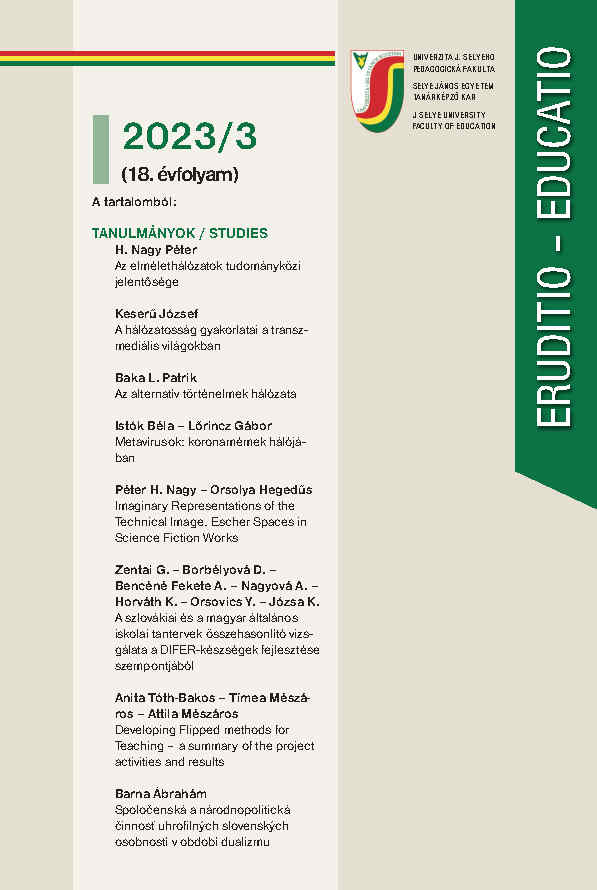Imaginary Representations of the Technical Image
Imaginary Representations of the Technical Image
Escher Spaces in Science Fiction Works
Author(s): Péter H. Nagy, Orsolya HegedűsSubject(s): Social Sciences, Media studies, Communication studies
Published by: Pedagogická fakulta Univerzity J. Selyeho
Keywords: Escher space; Inception; Strange Loop; impossible objects; paradoxical shapes; simultaneous time
Summary/Abstract: Our study deals with the unique spatial structures of science fiction works. According to Scott Bukatman, the rhetoric of technological majesty in science fiction is one of the most defining experience transmission elements and mood regulation. The genre abounds in artificial infinity: giant spaceships, boundless outer space, hyperspace, planetary cities, galactic empires, and more. However, this shared and genre-specific vision can be supplemented by another type of spatial structure, as the infinite can be produced differently. We can approach this other route from the productions of M. C. Escher. The artist’s most famous paintings, inspired by an article by mathematician Roger Penrose, are based on an apparent paradox: we start on a flight of stairs, uphill, always in the same direction, and after a few rounds, we reach the same level from which we had started. Douglas R. Hofstadter called this phenomenon a strange loop based on the circularity of thinking, the mathematical concept of pattern, and the dilemma of the visual representation of infinity. If one takes a look at the sci-fi spectrum, one can immediately see the prevalent use of Escher spaces or strange loops. In Christopher Nolan’s film Inception, this visual organizing element is present on several levels: it is a defining figure of the plot, dramaturgy, but it can also be understood as an interpretive model encompassing the whole composition. Escher images are evident in the film industry, but a strange loop is often mentioned in sci-fi novels. Our study provides several examples of this phenomenon from the field of literature, from Sergei Lukyanenko’s Watch Series through George B. Marvell’s novel Világok útvesztője [Maze of Worlds] to Ted Chiang’s novella Story of Your Life. Our intermedia analyses can contribute to the approach of image techniques and visual perspectives common in speculative fiction, of which the phenomenon in question may be one of the most widespread because it brings to the fore the point of intersection of the medial and the real as well as the possible and the real. Simultaneously, the recipient becomes aware of the fictitious world made up of laws and regularities different from ours from the point of view of paradoxical shapes. The technical image can define and control the imaginary representation in this sense.
Journal: Eruditio - Educatio
- Issue Year: 18/2023
- Issue No: 3
- Page Range: 068-077
- Page Count: 10
- Language: English

